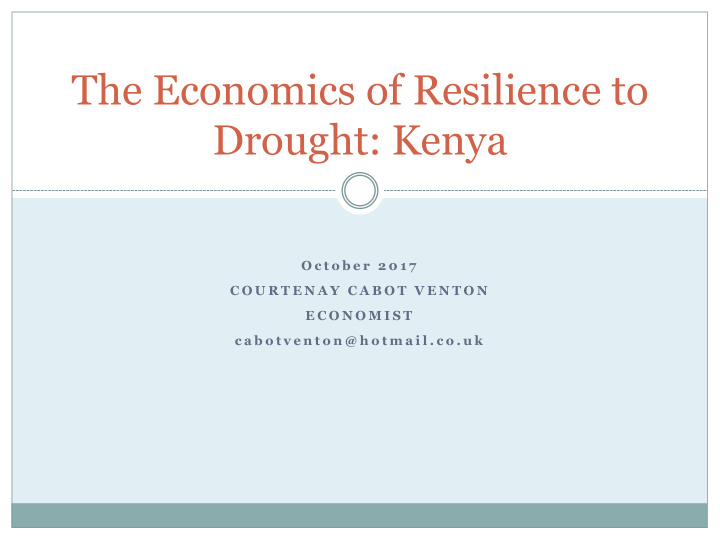



The Economics of Resilience to Drought: Kenya O c t o b e r 2 0 1 7 C O U R T E N A Y C A B O T V E N T O N E C O N O M I S T c a b o t v e n t o n @ h o t m a i l . c o . u k
Aim of the Study Compare the costs, avoided losses, and benefits of three scenarios: 1) a late humanitarian response 2) an early humanitarian response 3) early action and resilience building
Two lines of investigation Empirical evidence - investigate existing and 1. ongoing data collection, relevant literature for empirical evidence of impacts of early action/resilience building 2. Model potential outcomes using Household Economy Approach for a population of 3m in Turkana and NorthEast livelihood zones
Kenya NDVI/Fodder 2000 2001 2002 2003 2004 2005 2006 2007 2008 2009 2010 2011 2012 2013 2014 2015 2016 2017 January February March April May June July August September October November December
Net Cost, US$ Million 1000 Kenya, Net Cost 900 800 Resilience building would save almost 700 $800 million over a 15 year period 600 500 400 300 200 100 0 Late Early Hum Safety Net Resilience Net Cost, US$ Million
Net Cost, US$ Million Kenya, Net 500 Cost with Benefits 0 When avoided losses Late Early Hum Safety Net Resilience are incorporated into the analysis, resilience building -500 would save upwards of $1.9 billion over a 15 year period, or -1000 $162 million per year. -1500 Benefit to Cost Ratio $5:1 -2000 Net Cost, US$ Million
Recommend
More recommend